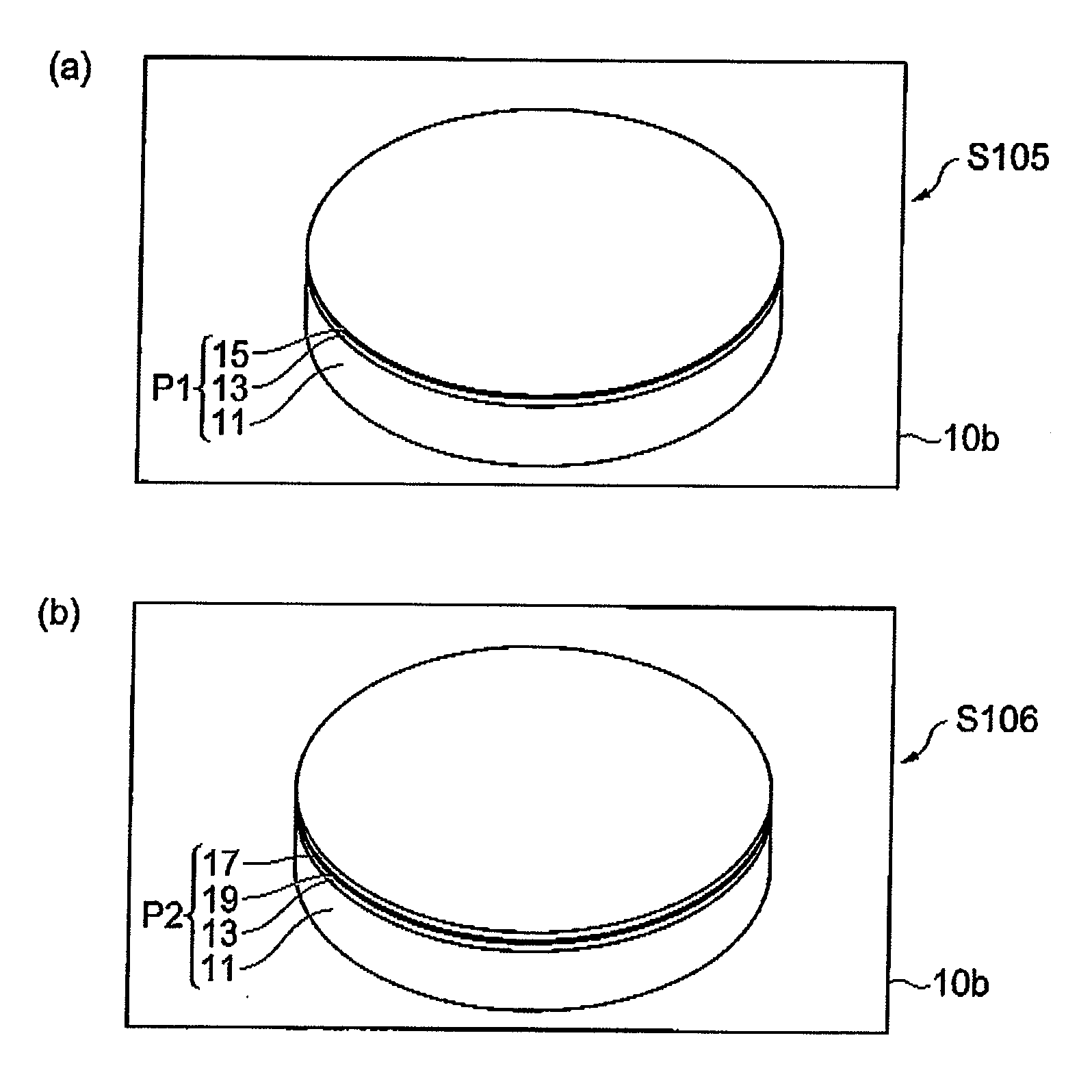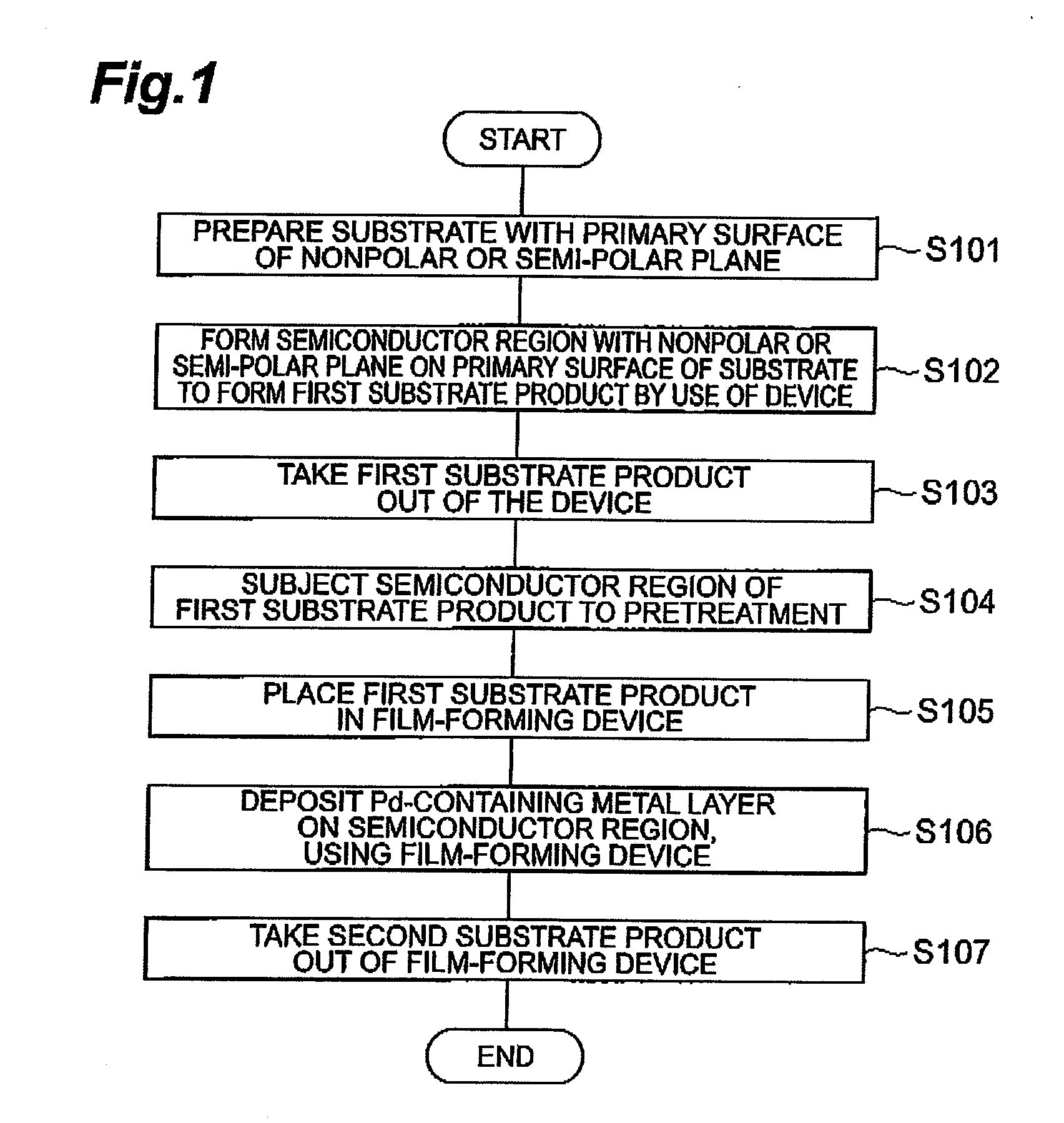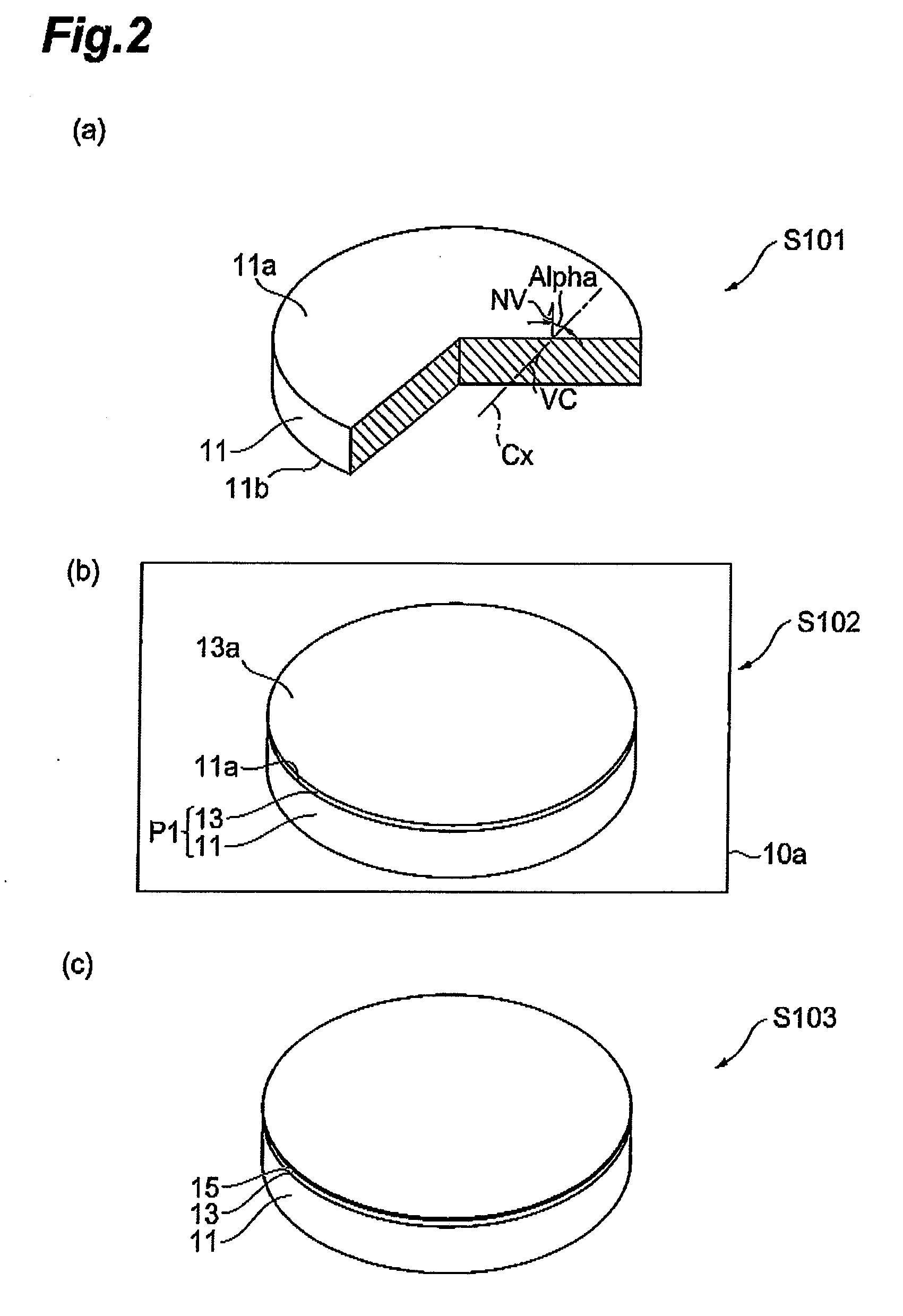Group iii nitride semiconductor device
- Summary
- Abstract
- Description
- Claims
- Application Information
AI Technical Summary
Benefits of technology
Problems solved by technology
Method used
Image
Examples
example 1
[0054]An epitaxial substrate shown in FIG. 4A was produced by organometallic vapor phase epitaxy using an n-type semipolar GaN substrate 31. The primary surface of the GaN substrate 31 included an m-plane. An n-type GaN buffer layer 32 was formed on this primary surface. The epitaxial substrate Epi1 included a Si-doped n-type GaN layer 33, a Mg-doped GaN layer 34, and a high-concentration Mg-doped p-type GaN layer 35. The thickness of the Si-doped n-type GaN layer 33 was 1 μm. The thickness of the Mg-doped GaN layer 34 was 0.4 μm. The thickness of the high-concentration Mg-doped p-type GaN layer 35 was 50 nm. These GaN-based semiconductor layers were grown in order on the substrate 31.
[0055]A resist was then formed by photolithography, prior to deposition of a metal film for a p-type electrode. This resist had an annular aperture. Thereafter, a Pd electrode was evaporated onto the epitaxial substrate by the electron beam method, in an evaporation system in vacuum of about 1×10−6 Tor...
example 2
[0057]An epitaxial substrate was produced according to the same procedure as in Example 1. This epitaxial substrate was subjected to ultrasonic organic cleaning using acetone and 2-propanol. Thereafter, it was cleaned with hydrochloric acid, aqua regia, and hydrofluoric acid, for five minutes each. A Pd electrode was evaporated onto this epitaxial substrate by the electron beam method. The thickness of the Pd electrode was 100 Å. The temperature during the evaporation was room temperature. On the other hand, another epitaxial substrate was prepared by the production and cleaning methods of the same steps as the above epitaxial substrate. An Ni / Au electrode was evaporated onto this epitaxial substrate. Then this Ni / Au electrode was subjected to a thermal treatment. Ni was evaporated by the electron beam method. Au was evaporated by resistive heating. The thickness of each of Ni and Au layers was 50 Å. In this manner, the different types of p-type electrodes were made on the two respe...
PUM
 Login to View More
Login to View More Abstract
Description
Claims
Application Information
 Login to View More
Login to View More - Generate Ideas
- Intellectual Property
- Life Sciences
- Materials
- Tech Scout
- Unparalleled Data Quality
- Higher Quality Content
- 60% Fewer Hallucinations
Browse by: Latest US Patents, China's latest patents, Technical Efficacy Thesaurus, Application Domain, Technology Topic, Popular Technical Reports.
© 2025 PatSnap. All rights reserved.Legal|Privacy policy|Modern Slavery Act Transparency Statement|Sitemap|About US| Contact US: help@patsnap.com



